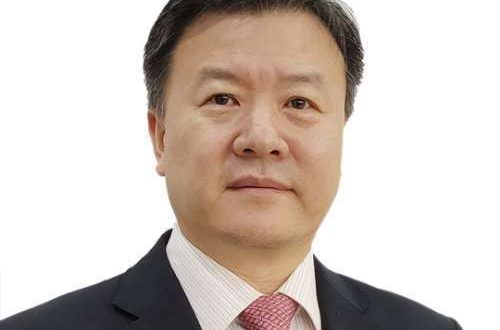By Wang Yu, Chinese Ambassador to Afghanistan
On 16 July, the National Bureau of Statistics of China reported that the Chinese GDP grew by 3.2% in the second quarter of 2020, a positive change from the minus 6.8% in the first quarter. China has become the first major economy to achieve positive growth since the start of the COVID-19 pandemic in the whole world. The economic highlights in China offer hope that the world economy may emerge from its darkest hour.
Major economic indicators have rebounded and market expectations are generally good. The added values created by both industrial and service enterprises above the designated sizes in the second quarter realized growth, a reverse of the situation in the previous quarter. The purchasing managers’ index (PMI) has been above the 50% expansion threshold for four consecutive months. With the total liquidity at a reasonable and abundant level, capital market confidence has been boosted.
The foundation of agriculture has been further consolidated and the leading role of industry has become more apparent. China has achieved another bumper harvest in summer grains, with a total output of 142.81 million tons in 2020, an increase of 0.9% over 2019. The recovery of industrial production has gained momentum, with industrial physical quantities picking up. In June, total power generation reached 630.4 billion kW·h, up 6.5% year-on-year and at accelerated speed for the fourth consecutive month.
Decline in the service sector has narrowed, with modern services gaining a good growth momentum. In the first half of the year, added value created by the tertiary industry fell from a year earlier, but the scale of decline was 3.6 percentage points smaller than that in the first quarter, with a 1.9% growth in the second quarter and a 5.2% decline in the first quarter. Modern services bucked the trend with growth. For example, information transmission, software and IT services grew by 14.5% and financial services by 6.6%.
Foreign trade and foreign direct investment have been stabilized, with roughly balanced international payments. Exports rose 4.3% in June, the third straight month of positive growth since April; while imports rose 6.2%, making June the first month of positive growth in the year. Foreign capital actually used in June reached RMB 117 billion (USD 16.72 billion), up 7.1% year-on-year. Foreign investments and foreign exchange reserves remain stable and the RMB has appreciated slightly.
The employment situation has gradually improved and consumer prices have risen moderately. In the first half of the year, 5.64 million new urban jobs were created, reaching 62.7% of the annual budget; the consumer price index (CPI) rose 3.8% year-on-year, down 1.1 percentage points from the first quarter. The CPI rose moderately in June, up 2.5% from a year earlier.
People’s basic livelihood has been well protected and notable achievements have been made in poverty alleviation. In the first half of the year, China continued to strengthen social security and safety net, with per capita transfer income rising by 8.2% in nominal terms, including a 9.3% increase in per capita old-age and retirement pensions and a 13.2% increase in per capita income from social relief and subsidies. In provinces with many poor people, per capita disposable income of rural residents registered nominal growth rates between 5.5% and 7.6% year on year.
After more than two months of hard work, China has become one of the first countries in the world to contain the COVID-19 pandemic. While fighting the pandemic, the Communist Party of China and the Chinese government made resolute decisions to introduce a series of measures to bring back work, production and business operation, thus restoring economy to normal growth in an all-round way and sending a positive signal to the rest of the world.
Innovative measures will be taken to implement macroeconomic regulation and control. China is gradually implementing new tax cuts and fee reductions totaling RMB 2.5 trillion (USD 358 billion), of which RMB 906.6 billion (USD129.8 billion) was already sliced in the first four months. Additional fiscal deficits and special treasury bonds for COVID-19 control total RMB 2 trillion (USD 286.4 billion). A special transfer payment mechanism will be created to deliver the increased funds directly to grassroots cities and counties.
More policies will be introduced to help enterprises out of difficulties. The financial sector is encouraged to cut their profits by RMB 1.5 trillion within this year in favor of their various enterprises clients. Results-oriented actions will be taken to speed up fee reductions. The relevant authorities will investigate into and rectify irregularities such as over collection and illegal collection as well as unreasonable additional burden on market players in the name of back tax collection. Measures will also be taken to further check up on and regulate business-related fees and charges collected by associations and chambers of commerce.
China will actively expand effective investment, focusing on new infrastructure, new urbanization and major transport and water conservancy projects. Arrangements are being made for the construction of 150 major hydraulic engineering projects this year and beyond, with a total investment of RMB 1.29 trillion, which is expected to mobilize a total of 6.6 trillion in both direct and indirect investments and create an average of 800,000 new jobs annually.
Every possible effort will be made to stabilize employment and protect people’s livelihood. Special attention will be given to key groups such as college graduates, migrant workers and poor households, with increased assistance for the employers and employees to maintain the existing jobs and for job seekers to get employed in various ways. Efforts will be redoubled to ensure basic livelihood while taking care of flood control, disaster relief and production safety in full force. China is determined to win the tough battle against poverty. Albeit in a pandemic, the Chinese government has made up its mind to lift the remaining 5.51 million people out of poverty within this year.
The Chinese government continues the reform of its own functions. More specifically, greater efforts are made to streamline administration, delegate power and exercise regulatory authority in a fair and just manner. Actions will be taken to enhance government service efficiency and create a good business environment, thus stimulating the market’s vitality.
The base of foreign trade and foreign investment must be stabilized. China will open wider to the outside world. While further opening up the manufacturing sector, it will also open the service sector wider, especially high-end services. The export tax rebate mechanism will be further improved to speed up the refund process. Financial institutions will be steered to increase financing support through credit, credit insurance and guaranty so as to ease the liquidity difficulties of foreign trade enterprises. Reforms to facilitate customs clearance will continue to further optimize services for foreign trade enterprises. These enterprises will also be encouraged to transform and upgrade themselves and to improve the quality and added value of their export products. The development of cross-border e-commerce, online transactions and other new forms of foreign trade will gain speed and lead to new foreign trade growth points.
China was the locomotive of the global economic recovery after the 2008 financial crisis. According to an IMF forecast in April this year, China will be the only economy to grow significantly in 2020 and its contribution to world economic growth between 2020 and 2021 will be 51.2%. In other words, the Chinese growth will be more than the rest of the world combined. While pandemic response becomes the new normal, China stands ready to strengthen cooperation in all fields with other countries, especially those along the Belt and Road, to revitalize the world economy towards common development.
China and Afghanistan are friendly neighbors linked by mountains and rivers. We maintain close cooperation with each other under the BRI framework. The two sides are exploring the establishment of a “fast channel” for entry and exit of people and a “green channel” for the movement of goods across the border. China will continue supporting Afghanistan in its fight against COVID-19 and engage in practical cooperation in this regard. We are willing to give priority to the needs of Afghanistan in the development and use of vaccines. China remains committed to promoting peace, reconciliation, economic development and people’s livelihood in Afghanistan. I am convinced that as long as China and Afghanistan work together, we will for sure overcome difficulties, beat the pandemic and safeguard the safety and health of our two peoples and people around the world.
 Afghanistan Times
Afghanistan Times




